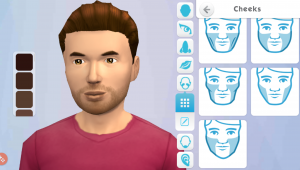
In last month’s Monthly Dose of Design, we examined how to effectively brand your research projects. This month we are looking at the key principles of conceptualising and designing a game concept that can be used within a research methodology.
But why should you use games within a research methodology?
Games are an effective way to engage research participants. This is because often people don’t know what they think or over rationalise their decisions. This means it can be hard to get a true reflection of their attitudes and behaviour. To overcome this, researchers often try to better understand attitudes and behaviours on an implicit/system 1 level (anything automatic, habitual, rapid or unconscious).
Gamifying research allows us to better understand implicit/system 1 thinking. It also increases participant engagement and increases motivation by using competition.
Having a game concept is the first step in designing a research game. A game concept is the idea that the game is built around. E.g. the concept behind Pokemon is ‘a world full of little monsters’ and the concept behind Monopoly is ‘property ownership and entrepreneurialism’.
Before you develop your concept you need to ask yourself the following key questions: What are the research objectives? Who is playing? What is the scene the game is set in? What is valuable in the game? What motivates players? What kind of problem solving does the game use?
If you ask these yourself these questions, you will be able to effectively brainstorm ideas that will help you generate a viable research game concept.
concept foundations
The foundations of your concept will be based on the story and aesthetics.
The story describes the world of your game. This is paramount at the start of the game as the copy and tone of voice sets the agenda for the rest of the game. The aesthetics encompass the visuals, sounds and animation. Both story and aesthetics are closely tied together and are integral to generating an engaging player experience.

https://goo.gl/J7n9X7
personalisation
Personalisation allows a player to become immersed – and therefore engaged – within a game. You can allow players to personalise the game experience by building personalised avatars to represent themselves.

game mechanics
Mechanics are the rulebook of the game. They set out the steps a player must take to achieve the goals of the game. When considering game mechanics, you don’t have to reinvent the wheel, common game mechanics include:
- Capture (gaining territory or possessions) e.g. Risk
- Exploration (discovering new places or unlocking experiences) e.g. Warcraft
- Role Playing (being someone else) e.g. Zelda
- Puzzle-Solving (matching objects or solving riddles) e.g. Solitaire
- Dice Rolling (luck based-instructions) e.g. Backgammon
- Co-operative Play (collaborating with other players) e.g. Worms
success criteria
There needs to be some way of knowing when players have met the objectives of the game. Clear success visuals, sound and animations help establish a sense of success and completion. These can then lead on to reward screens. Clear communication of success criteria will avoid confusion and motivate players to continue participating.

https://goo.gl/ZM5CF3
rewarding players
It is integral to consider how you will reward your players. Rewards help to encourage game participation and enhance the game experience. This will provide richer results and insights. There are two ways to reward players – intrinsically and extrinsically.
Intrinsic rewards consist of in-game rewards. For example, earning points, getting recognition and encouragement for earning those points or unlocking other areas/elements of the game.
Extrinsic rewards are external rewards. For example, offering vouchers or cash incentives for scoring high points or completing a certain amount of levels of the game.
competition
Competition is an interesting element to introduce into the game. It can thrive by encouraging better engagement. If your game is team based, it can encourage richer collaboration within the teams. This can be done by using scoring systems that compare results across different players and leadership boards.
However, only introduce competition if it aids your game objectives, otherwise it can create an unhealthy obsession with winning at any cost i.e. What is the most effective way to overtake my competitors? Which could compromise the quality of your results.
If you follow these rules you will have the foundations to develop a research game that will engage players and allow you to better understand implicit/system 1 thinking.
This post was originally published on Greenbook
By Emma Galvin, Creative Executive & Nicholas Lee, Senior Creative Executive
if you would like further information, please get in touch via:
egalvin@northstarpresents-volvo.com or nlee@northstarpresents-volvo.com




